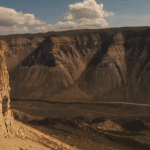Secular materials of all kinds boldly teach that evolution is a scientific fact. They tell us that 99% of scientists believe that all life started in some pool billions of years ago. All the college professors seem to agree, and well… they can’t all be wrong. The observational evidence must be overwhelming, right? No, actually the evidence points to evolution not being true.
Here are a few examples of real living things that don’t cooperate with the narrative.
Plants
According to evolutionists, land plants arrived on the scene 475 million years ago, based on the deepest fossils found. But, the leap from sea-dwelling algae to a land plant is too great for the evolutionary model to perform.
New information had to be added to the algae’s genetic code to
- prevent it from drying out in the air,
- add roots to absorb water and nutrients from the soil,
- develop some form of stem to grow upright without the support of water,
- and to develop the ability to reproduce on land.
In the real world we see living things can lose information or scramble information, but they never add information to the genetic code. Different plant kinds thrive in diverse environments because God created them to do so.
Symbiotic Relationships
Many flowering plants need insects for pollination, and insects need nectar for food. If evolution occurred, how did the flowering plants know that bees were going to be around to pollinate their flowers? And how did the bees know that flowers were going to evolve for them to get nectar?
Living Fossils
A supposedly 200 million-year-old fossil of a Ginkgo tree looks identical to the modern Ginkgo tree. Another example is the Wollemi pine that was recently discovered in Australia. A fossil dated at 90 million years was a near-perfect match to the modern pine.
Evolutionists claim that the earth was quite different millions of years ago. If this were the case, then both of these trees would have been forced to evolve into something different than what they are now.
Adaptive Bird Beaks
Darwin saw that finch beaks change, thus he believed that proves evolution is possible.
Let’s look at a short history of what Darwin witnessed on the Galapagos Islands. After a severe drought, plants produced fewer seeds for the finches then living on the islands. The finches with the larger beaks were more likely to survive because they were able to eat both the large seeds and the small seeds.
Within a few years, more finches on the islands had larger beaks. When the rains came back, just a few years later, the average finch beak size returned to its normal size. This is natural selection, not evolution. The finches’ genetic code had the information to adjust the size of the beak for conditions such as a drought. The finches started out as finches and ended up as finches; no evolution took place.
Birds Evolved from Dinosaurs
Dinosaurs are cold blooded while birds are warm blooded and have a much higher metabolic rate.
Additional support for dinosaur ectothermy comes from Barrick (2000). He calculated that a 7-ton, plant-eating, ectothermic [cold-blooded] Triceratops would only have to consume the same amount of food as a modern horse. By contrast, a similar-sized endothermic [warm-blooded] Triceratops would have needed to eat nearly 24 hours a day to maintain its metabolic requirements. Carnivores like a 7-ton ectothermic T. rex would have only needed the equivalent of a single adult hadrosaur per year, whereas an adult endothermic T. rex would have needed to consume almost one hadrosaur per week. Getting enough food each day into an endothermic, 40-ton vegetarian sauropod, with their poor dentition and tiny heads, would have been an even more difficult task. ~Dr. Tim Clarey geosociety.org
- Bird’s lung and oxygen intake are vastly different than that of dinosaurs.
- Feathers are very different from scales in both their structure and growth.
There is no way possible that new information could be added to the DNA to change a dinosaur (or any reptile) into a bird. Remember that information can be scrambled or lost, but new information cannot be added to the DNA.
Many biology textbooks and museums make the claim that Archaeopteryx was the perfect transitional fossil, being the perfect intermediate between reptiles and birds. As proof, they point to the fact that this ancient bird had teeth, claws on its wings, and a long tail. While no modern birds have teeth, there has been another ancient bird fossil with teeth. The ostrich and a South American bird called the hoatzin have claws on their wings. The long tail is a fully feathered tail that you would see on a bird.
Most evolutionists now realize that the Archaeopteryx is a true bird after finding more fossils that show far greater details of its feathers.
Scientists that believe in evolution are frustrated because they can’t find fossils of animals that are between reptiles and birds. Because there are no intermediate fossils, they want you to believe that some dinosaurs had feathers.
Dinosaurs are land animals that were created on Day 6 of creation week, and birds were created on Day 5. Birds were created as fully developed, 100% birds by an all-powerful Creator God who shared what and how he created as real history in the first book of the Bible, Genesis.
But ask the animals, and they will teach you, or the birds of the air, and they will tell you; or speak to the earth, and it will teach you, or let the fish of the sea inform you. Which of all these does not know that the hand of the Lord has done this? In his hand is the life of every creature and the breath of all mankind. Job 12:7-10







